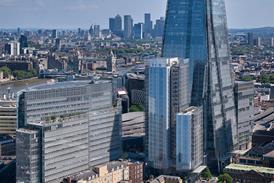Twentieth Century Society wades into row over demolition-threatened Airey-style homes

Controversial proposals to demolish 70 Airey-style 1950s prefabs near Leeds and replace them with new homes have drawn opposition from conservation group the Twentieth Century Society.
The group is siding with local residents in the village of Oulton – and Elmet & Rothwell MP Alec Shelbrooke – and calling for the rejection of the plans, drawn up by Wakefield-based JRP Associates for property investor Pemberstone.
The C20 Society joins scores of residents in opposing the proposals, which would see the homes, built from pre-cast concrete, demolished and replaced with more traditional brick homes, some of them five-bedroomed detached properties with integral garages.
It argues that there is no indication that the pre-cast concrete homes are structurally unsound, and Airey-style homes are capable of being refurbished and upgraded to meet modern standards – and points to a low level of affordable housing on offer from Pemberstone’s proposals.
Senior conservation officer Tess Pinto said only 15% of the new housing was earmarked to be made available at affordable prices.
“Some Airey houses have suffered from structural issues but these are not the result of an innate flaw in the design or construction process, and there are several well-established and approved repair schemes available,” she said. “There is nothing to indicate that the houses in question here are structurally unsound or require anything more than general maintenance to meet modern living standards.”
Pinto said that largely unaltered areas of Airey housing – named after designer Edwin Airey – were now relatively rare and viewed in an increasingly positive light.
“Historic prefabricated housing is widely valued and generates a great deal of contemporary interest in the context of our current housing crisis,” she said.
“The perceived value of historic prefabricated housing is demonstrable – Historic England have designated a number of examples of post-war temporary prefabs, and the Beamish Living Museum has recently acquired a small group of Airey houses for their new 1950s village.
“Beyond their socio-historic and architectural interest, prefabricated housing is recognised as facilitating the creation of strong, successful and close-knit communities.”
MP Shelbrooke aired concerns over the future of the community in a letter to the chief planning officer at Leeds City Council, Tim Hill.
“I understand that the majority of the tenants living on the estate have assured shorthold tenancies, and they will lose their homes,” he said.
“Many of these residents have lived on the estate for many years, sometimes decades, they work in the area, their children attend local schools and they have a strong sense of community which would be lost once they have all dispersed.”
Shelbrooke said it was unlikely that any of the Airey homes’ current residents would be able to afford to buy or rent the new properties and urged the city council to “take into account the social aspect” of the application before making a final decision.
Identifiable by their shiplap-style exteriors, Airey houses were often found outside of dense, urban conurbations because of the ease of transporting their factory-made components. They were designed for the Ministry of Works’ emergency housing programme after the Second World War.
The C20 Society said that despite being delivered in large numbers in the 1940s and 1950s, it was not known how many Airey homes were still standing.















1 Readers' comment